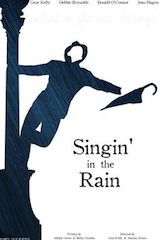
Considered by many to be the greatest film musical of all time, Singing in the Rain is also one of my personal favorite things, a movie about the art and business of making movies.
At the pinnacle of fame and fortune during the silent film era, we meet Don Lockwood (Gene Kelly) and Lina Lamont (Jean Hagen). Hollywood on-screen sweethearts and gossip columnist fodder. There is a great sense of satire and spoof throughout this film, and Don and Lina remind us an awful lot of early Hollywood’s most famous on-screen couple; Mary Pickford and Douglas Fairbanks. Though it’s clear Lina is happy with her life, her image, and being the only lady in Don’s path, it is equally clear Don is not so satisfied with his status quo.
People think of reality TV as a fairly recent concept, but gossip columns were around long before movies and the tabloids skyrocketed with the birth of Hollywood. Studios had full control over their actors and they were basically like property. This is something also explored in the film Hail Caesar! released earlier this year.
In the first minutes of the film, Don is telling the press the stretched truth of his journey to Hollywood. This journey includes his best friend and lifetime co-star Cosmo Brown (Donald O’Connor). If it isn’t immediately apparent that Cosmo is the chief source of humor in the film, his acrobatically cartoonish performance of “Make ‘Em Laugh” should be enough to convince you.
Gene Kelly and Donald O’Connor have mesmerizing comedic and athletic synchronicity. So much of this film is expressed in bodily movement. This is partially because of the dancing numbers, but also because of the physicality of acting during the silent era. Kelly and O’Connor’s energy levels caffeinate an already lively production. My favorite dance sequence is their “Moses Supposes” duet during elocution lessons. This scene is making light of the rush for diction and vocal agents during the transition to “talkies” from silent film.
The principle conflict in the story is the alarming news of synced sound in film and the effect it will have on the art and those whose careers have been rooted in the old way. This was a pivotal moment not only for film industry history but history in general. Video synced with sound became the chief method of communication to masses and remains so to this day. This change affected the industry so much you can see it played out in other great films like Chaplin or The Artist.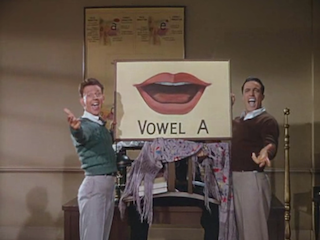
Most silent film actors did not know how to properly deliver lines of dialogue, except for the few who had a theater background. This film reveals so much behind-the-scenes truth about the angst of this evolution but does so with a smile. A lot of stars were made fun of during this transition to talkies because they weren’t able to act with their voices. Jean Hagen gives a hysterical performance as the abrasively shrill Lina who appears demure and beautiful but sounds like nails on a chalkboard. The scenes featuring Lina and her dramatic dialogue coach working to shape her voice for cinema are among the funniest in the film.
Shortly before this change is announced, Don Lockwood unintentionally finds himself in the car of Kathy Selden (brought to life by the adorable Debbie Reynolds). Kathy comes off at first as a slightly pretentious dreamer with her own ideas of what real acting is. After their rather acidic first encounter, we find out that Kathy is working as a dancing chorus girl trying to find her path to stardom. She and Don find themselves thrown together again in an embarrassing incident at a party that ends up costing Kathy her job.
At the time of the film’s release, both Gene Kelly and Donald O’Connor were already very established stars in Hollywood. I didn’t know this was her first big break until later, but it’s amazing how Reynolds, a 19-year-old rookie, is able to match note-for-note and step-for-step with her costars. All three of them simply radiate fun and joy into every frame, especially their “Good Morning” piece, the only song all three of them sing together in the film.
Perhaps it’s just the girlishness in me, but I have always loved the parts with Don and Kathy best. They have a simple, lovely romance. My favorite scene is the song “You Were Meant for Me” in which Don uses a movie set room to serenade Kathy. Though this film is very technicolor and glossy most of the time, I find Kathy and Don’s interactions very natural and sweet. As Don fills the set with falsified moonlight and sings to her, they begin to dance. This beautiful scene then serenades us as the audience.
Gene Kelly poured 110% of himself into this film, acting, singing, dancing, and choreographing the sequences. Heck, I’d give a full credit just to his smile. As I did a little research recently, I was surprised to discover that Gene Kelly was actually 40 when they shot Singing in the Rain, but his spirit, agility, and fitness make him seem at least ten years younger. It’s hard not to be amazed by him, especially during the title piece “Singing in the Rain,” in which he dances with complete gusto and grace in a full suit whilst being continually soaked by buckets of water.
When I first watched this film, I found the “Broadway Rhythm” sequence a little off-putting. Basically it a short film within the film that honestly doesn’t have anything to do with the actual story. At first glance, it can feel like a vanity piece for Gene Kelly, as he’s the only star in the segment. However, it wasn’t necessarily something he chose for himself. The studios at the time often shoehorned spectacles like that in their films because they thought that’s what the audiences wanted. Essentially, that was true, but I feel like it kind of sags the movie a bit with its irrelevance and length. I call it the “drug trip” portion of the film because of its dreamy, mid-century surrealism. However, the dancing is gorgeous, especially as a sensual duet between Kelly and Cyd Charisse.
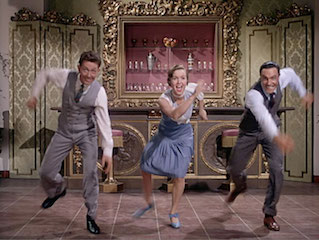 I would argue that Singing in the Rain isn’t vocally the most impressive singing you’ll ever hear, but the sheer joy of the cast is so infectious it doesn’t really matter. The songs are fun and memorable. The set pieces and design of every scene make you feel like you’ve walked into Willy Wonka’s factory, magical and visually delicious.
I would argue that Singing in the Rain isn’t vocally the most impressive singing you’ll ever hear, but the sheer joy of the cast is so infectious it doesn’t really matter. The songs are fun and memorable. The set pieces and design of every scene make you feel like you’ve walked into Willy Wonka’s factory, magical and visually delicious.
As the pressure to go “talkie” mounts and Lina’s jarring vocals do not improve, the studio decides to make their current Lamont and Lockwood production, The Dueling Cavalier, into a musical. Knowing they are basically stuck with Lina as the lead, they hatch a plan to dub Kathy’s vocals over Lina’s to save the production. This was also something that happened quite a bit with actors during the big transition.
With that in mind, Singing in the Rain explores something we are still battling in film and television today, talent over image. Kathy is pretty, but she isn’t as glamorous as Lamont, and Lamont being an established actress has power and position that Kathy is denied. Lina’s status makes her high maintenance and difficult to work with, a cutthroat even. Kathy is more giving and makes production flow easily not only from the nature of her talent but by the nature of her character too.
As I watched this film again, it saddened me knowing that nothing has truly changed. This theme remains fresh as we continually see image and status often trumping true talent and ability. You can go to any online news source and find a deluge of talentless people who are in high positions because they look good and have social status, yet down the street, you’ll find truly talented artists struggling to make ends meet. I think so many can relate to Kathy’s plight of having to work at The Coconut Grove as a chorus girl, while Lina has the studio eating out of the palm of her hand.
So what happens to Kathy, does she get the career she longs for? Will Lina reign as studio queen? Will they save The Dueling Cavalier? Will Kathy and Don live happily ever after? Will Cosmo finally get that raise he clearly deserves? Well, stop stalling and go watch this film. If you haven’t seen it yet, you are flirting dangerously with lunacy. I guarantee you will find yourself immersed in the colorful satire, and overcome with that glorious feeling that makes you happy again.

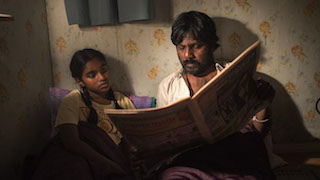
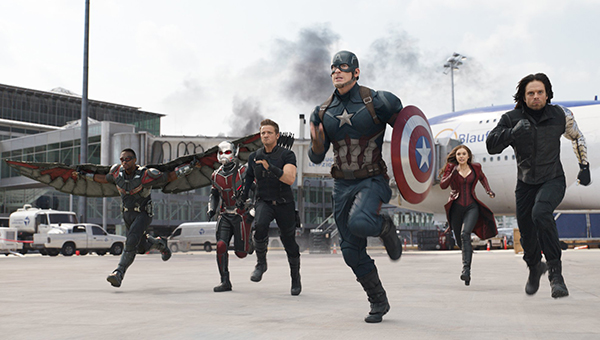
Excellent review of my favorite film! Really nice work, Alexis!